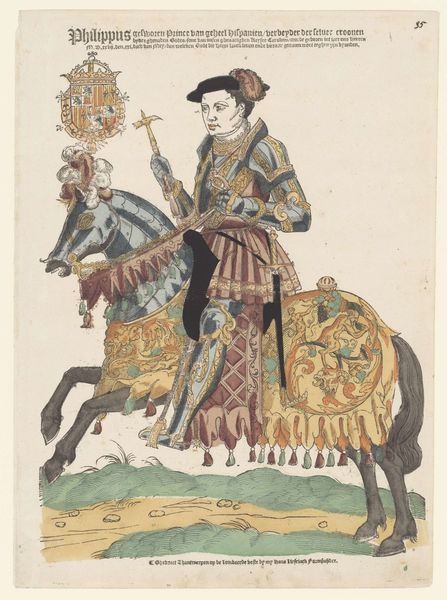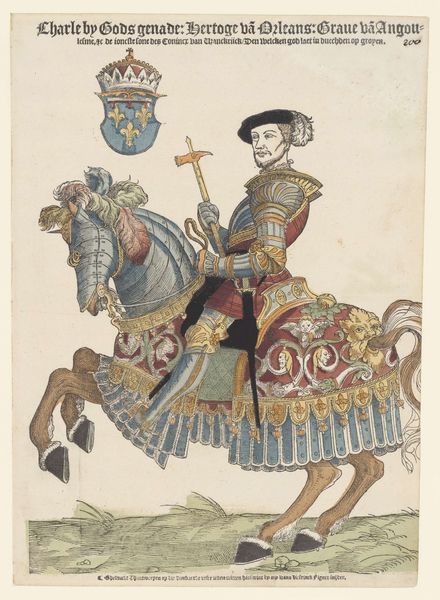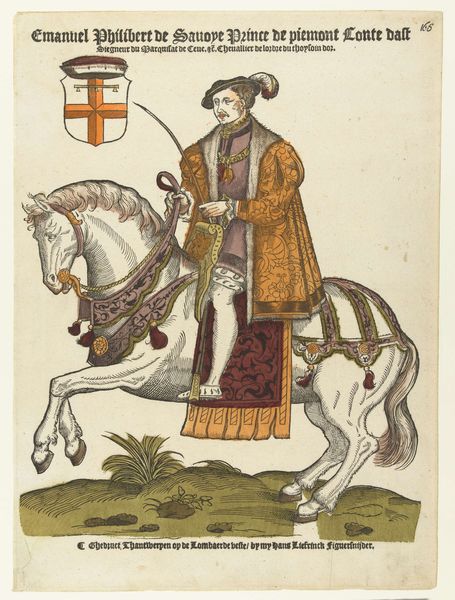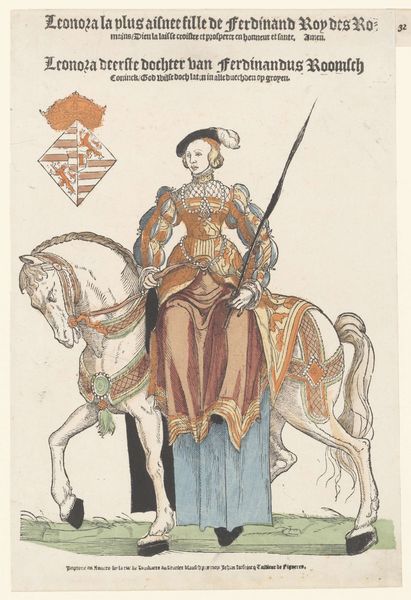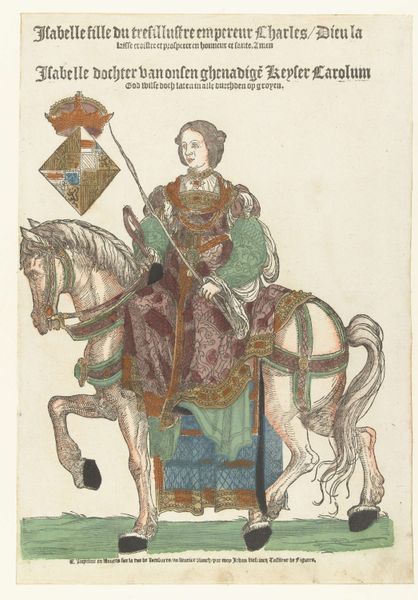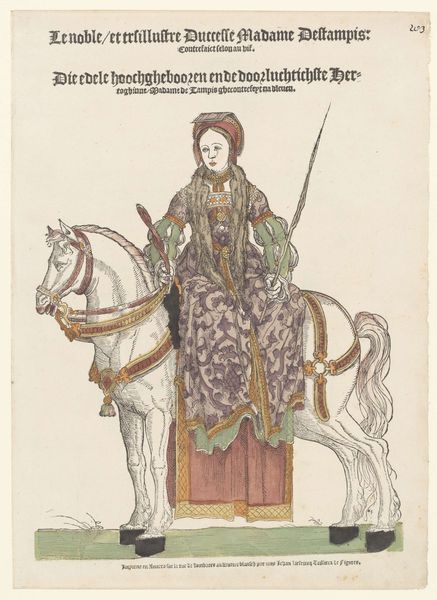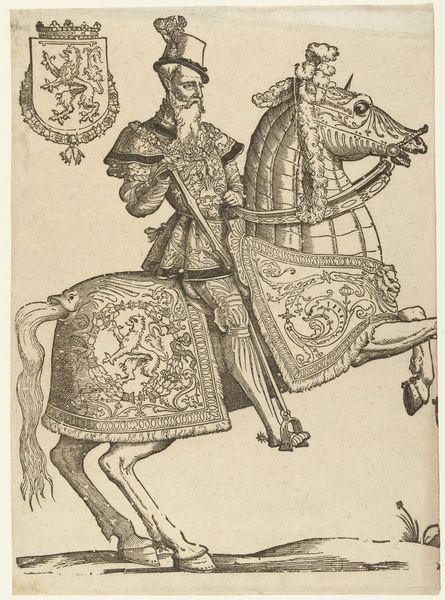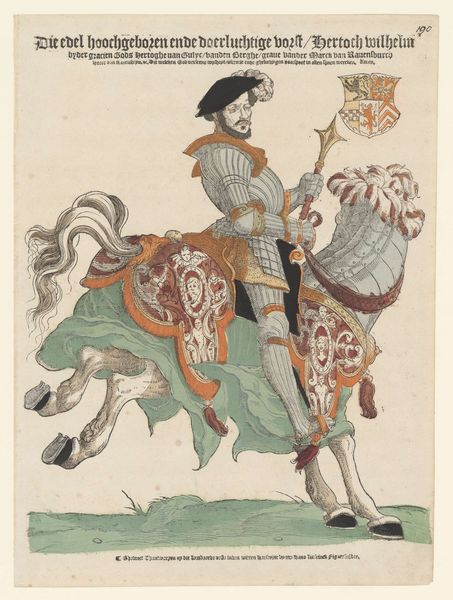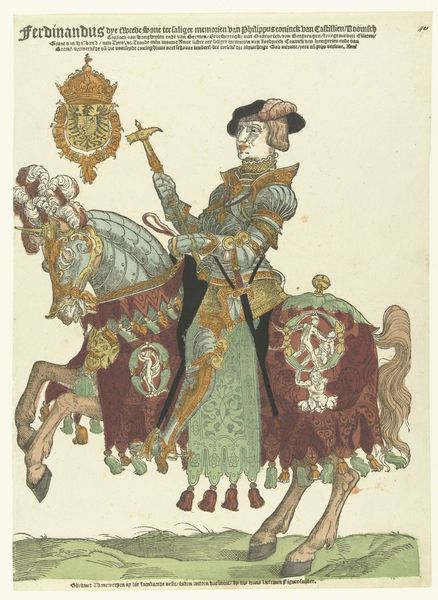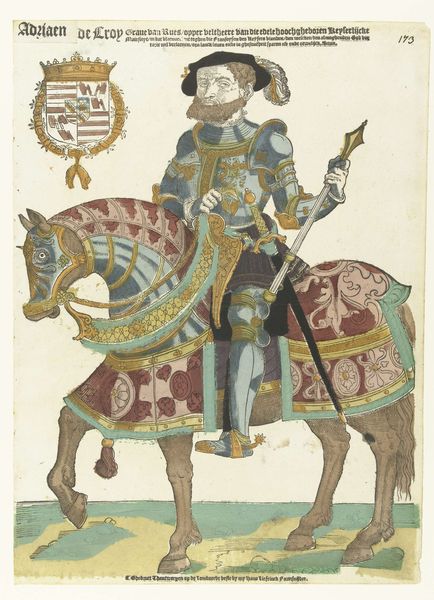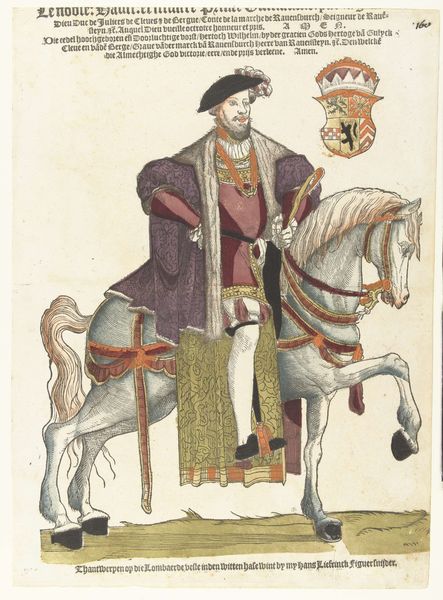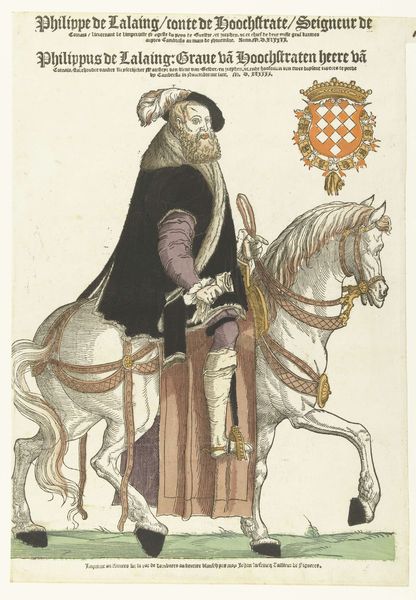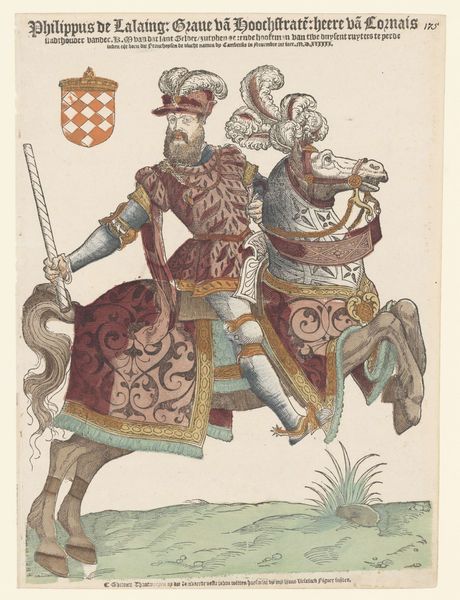
print, engraving
#
portrait
# print
#
11_renaissance
#
coloured pencil
#
northern-renaissance
#
engraving
#
erotic-art
Dimensions: height 406 mm, width 300 mm
Copyright: Rijks Museum: Open Domain
Curator: We are standing before Cornelis Anthonisz.'s "Portrait of Eleonora of France on Horseback," dating from somewhere between 1539 and 1544. Editor: It strikes me immediately how linear and precise the whole piece is. It feels very controlled, doesn’t it? The cool hues are in stark contrast with the subject’s status. Curator: Yes, it's fascinating to consider the intended message. As the sister-in-law of Emperor Charles V and Queen of Portugal, Eleonora was a figure of immense political significance. This image likely served a very specific purpose in conveying her power and status through carefully chosen symbolism. The way it visualizes royal power makes one wonder about the role prints played in spreading images of sovereignty across the continent. Editor: Indeed, and look at the detail of her dress— the sumptuous fabric, the delicate pearls. There is a flatness in the rendering of the form, it feels almost deliberate, like an emblem instead of a person, further accentuating the distance. The line quality adds an almost brittle effect, giving an abstract feeling as one reads all of these formal characteristics. Curator: It’s interesting to observe how the artist navigates between presenting her individual likeness and fulfilling the demands of portraiture as a political tool. Did he prioritize realism or the performance of power, what considerations would impact decisions during that era? Also how these popular images reflect or influence collective notions about royalty in society. Editor: Perhaps both are simultaneously at play. And it speaks to the artist's craft; the crispness of the engraving juxtaposes the intricate layering, all contributing to a visual language rooted in order. Curator: It's hard not to think about the social and political circumstances and the power the work might hold because of them. Considering prints were relatively affordable, how did displaying works such as this affect opinions or further validate the ruling family? Editor: Considering its emphasis on clarity, precise outlines, and a near-obsessive devotion to pattern, one is led to view the piece as a crafted and calculated spectacle intended to present authority in a visually memorable manner. Curator: Examining Cornelis Anthonisz.'s engraving, we find an interaction between artistry and representation that continues to pose questions regarding political intent, even centuries later. Editor: Absolutely. I’ll certainly walk away thinking about how seemingly straightforward imagery often bears more layered interpretations.
Comments
No comments
Be the first to comment and join the conversation on the ultimate creative platform.
